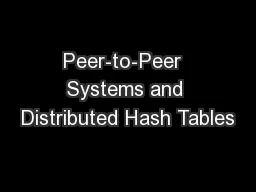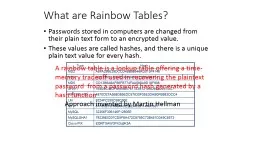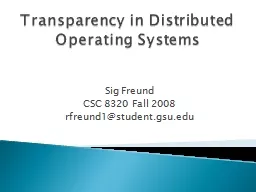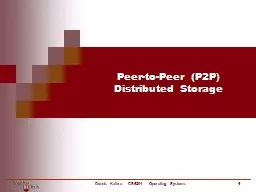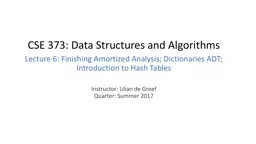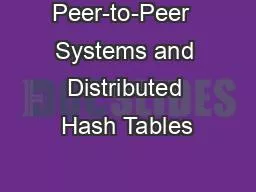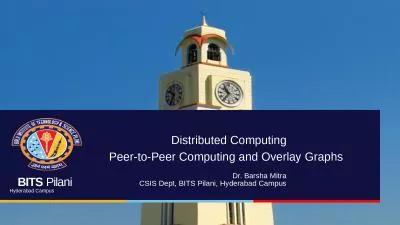PPT-Peer-to-Peer Systems and Distributed Hash Tables
Author : myesha-ticknor | Published Date : 2019-03-15
COS 518 Advanced Computer Systems Lecture 15 Daniel Suo Credit All slides copied wholesale from Kyle Jamieson and Mike Freedman Selected content adapted from
Presentation Embed Code
Download Presentation
Download Presentation The PPT/PDF document "Peer-to-Peer Systems and Distributed Ha..." is the property of its rightful owner. Permission is granted to download and print the materials on this website for personal, non-commercial use only, and to display it on your personal computer provided you do not modify the materials and that you retain all copyright notices contained in the materials. By downloading content from our website, you accept the terms of this agreement.
Peer-to-Peer Systems and Distributed Hash Tables: Transcript
Download Rules Of Document
"Peer-to-Peer Systems and Distributed Hash Tables"The content belongs to its owner. You may download and print it for personal use, without modification, and keep all copyright notices. By downloading, you agree to these terms.
Related Documents

